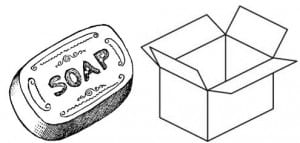It started with a book.
Social Media and Social Work Education is a valuable and timely publication. Sadly, for me, any mention of digital exclusion was absent. Social media can be a powerful learning tool but users must be aware of its dichotomous nature. I couldn’t find any reference to digital divides, assistive technology or the need for inclusive approaches. This was disappointing. It’s ironic the book was published by Critical Publishing when critique around digital exclusion was missing.
It’s been several years since I developed dodgy eyes needing treatment which blurs my vision, relocating me in a foggy world where text and images are indistinct and my capacity for online communication diminished. The first time it happened I thought I could still use a computer. But I couldn’t. Accessible digital content relies on inclusive design and the inaccessibility of online content was a shock. The Franklin adage “Tell me and I forget. Teach me and I remember. Involve me and I learn.” was never truer. My real life experience of digital exclusion led to the soapbox I’ve dragged around ever since.
The Social Work profession is all about difference, in particular through marginalisation and disempowerment. Evidence suggests if you’re socially excluded you’re likely to be digitally excluded making social work education ideally placed to highlight the complexity of digital divides. In a ‘digital by default’ society, where public health and welfare services have adopted a digital first policy, this virtual exclusion must be taken seriously.
Over the past few years there has been a dilution of attention to inclusive practice. In 2006, Jane Seale wrote E-Learning and Disability in Higher Education: Accessibility Research and Practice, where technology is described as a double edged sword, capable of enabling and disabling participation unless inclusive practice is followed. The Mobius Strip of a VLE and social media tools – they are both inside and outside at the same time. In 2011, a special edition of the Journal Research and Education Technology (Vol 14, Issue 1) included Holistic approaches to e-learning accessibility (Phipps and Kelly) a baseline paper for inclusive education and Using multimedia to enhance the accessibility of the learning environment for disabled students: reflections from the Skills for Access Project, (Sloan, Stratford and Gregor) about a now absent website for supporting accessible multimedia. The loss of Skills for Access is another loss for campaigners of accessible digital content. The truth is still out there but you have to search for it. It’s getting harder to find.
Recently the DSA has been changed.
TechDis is to be dismantled.
The significance of these two events has barely rippled the surface of higher education.
Government initiatives have shifted from quantity of access to quality. Alongside all this dilution of critical awareness is the uncritical persistence of the myth of the digital native. How can there be a problem when the next generation consist of computer savvy whizz kids?
What is going on here?
Why is the assistive technology of digital democracy so damn expensive and difficult to use?
Why is exclusion from digital ways of working such an unacknowledged discrimination?
It has to be part of a wider discourse around diversity. Over the past 20 years there’s been a shift from equality politics and celebration of difference to a politics of normalisation. The internet is the silent arena where the war is being won. Power has become aligned with internet access. To be digitally excluded is to be silenced and made invisible.
The dreams of democracy of early internet pioneers have broken. It simnply isn’t happening.
As virtual avatars we have the potential for disrupting dominant discourse, of connecting with like-minded people and creating new digital alliances for resistance and empowerment. Core to this is raising awareness of digital divides and exclusions. It’s a concept threshold but not particularly troublesome knowledge. Is it?
——————————————————————————————————————————–
Holistic approaches to e-learning accessibility, by Lawrie Phipps and Brian Kelly;
Using multimedia to enhance the accessibility of the learning environment for disabled students: reflections from the Skills for Access Project, by David Sloan, John Stratford and Peter Gregor
